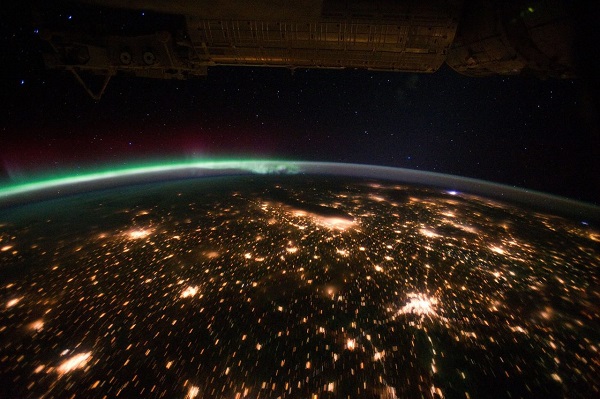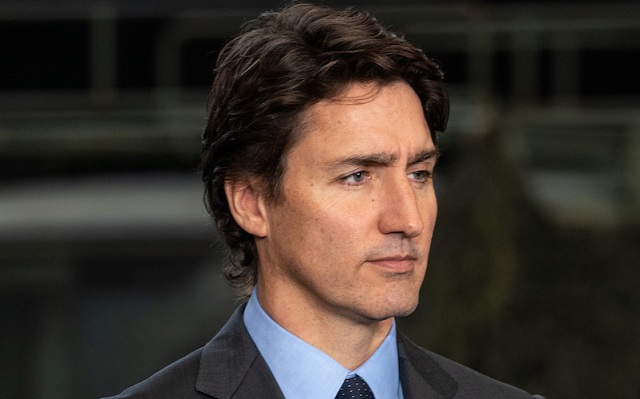Energy
Energy wise, how do you even describe 2024?

From the Frontier Centre for Public Policy
By Terry Etam
There still remains a full court press in North America/western Europe among certain socioeconomic classes to “just stop oil” and the like. While we as an industry in many ways remain in our foxholes, and the opponents of hydrocarbons roam freely, looking to criminalize if at all possible any positive dialogue about the value of hydrocarbons.
Huh. Look at that. It’s been ten years since I started writing about energy. Not that that particular trivia interests anyone, why would it, however it is interesting to look back at the impetus for writing and how that has changed.
Ten years ago, as I worked in a communications department for an energy infrastructure business that did not like publicity of any kind whatsoever, it began to dawn on me how dangerous were the habits that formed thereof, and how far reaching the consequences. As but one example, anti-pipeline activists were all over Washington DC like ants on a mound, pressuring the government to kill the Keystone XL pipeline. They swarmed social media and a motivated army spread the gospel like wildfire, truth be damned.
The pipeline industry looked at the energy ignoramuses and kind of just sniggered, for they knew they were right – pipelines were and are the safest and most reliable form of liquid/gas transportation, forming a global industrial backbone we can’t even imagine living without – and there seemed a largely prevailing attitude in industry that these pipeline facts were so glaringly obvious that everyone would figure it out. I still hear the chortling: “Look at those lunatics, protesting pipelines without knowing they’re standing on one that’s been there for 40 years.”
Yeah, well, the lunatics did pretty well didn’t they… Keystone XL is a distant memory, the US Mountain Valley Pipeline is years late and twice over budget, and even TMX is only now limping into service at what, about 700 times over budget and equally late… I shudder to think what kind of back room deals were cut with extremists who promised TMX would never be built and yet now stand silent. If we had a conservative prime minister at the helm now trying to complete TMX, I would bet my ears that the going wouldn’t be as protest-lite as it is now.
Ten years ago, the impetus was to fill a void in public energy knowledge because there wasn’t much of an effective voice that was doing so. If there was, there was scant evidence of any success. So that was kind of fun, going for the low hanging fruit of explaining energy nuances to a public that cared about nothing except utility bills and what it cost to fill up the family beast.
But that excitement faded as the energy industry’s inability to articulate its value was overwhelmed by the likes of Greta Thunberg, a Swedish teen that was hoisted onto the shoulders of cagey mobs, and thrust into the public consciousness as some sort of Jesus-like figure. At that point, the battlefield was completely overrun, and the oil/gas industry seemed to head underground and wait for the storm to pass. What a mistake.
There still remains a full court press in North America/western Europe among certain socioeconomic classes to “just stop oil” and the like. While we as an industry in many ways remain in our foxholes, and the opponents of hydrocarbons roam freely, looking to criminalize if at all possible any positive dialogue about the value of hydrocarbons. But. The anti-fossil fuel people are so busy working on Orwellian regulations/policies/roadmaps that they haven’t looked over their shoulders at the storm clouds brewing, the ones that hydrocarbon producers always knew would arrive.
As seven out of eight billion people on earth strive to live like the west does, the inevitable is happening: global demand for energy, in all forms, is soaring, and absolutely no one wants to take a step backwards in terms of standard of living. The world wants to add a billion air conditioners, because those things are life-transforming (see: any modern glass-cube high rise residential/commercial building, modern hospitals/seniors centers, etc), and the comfy west wants to add an estimated $250 billion per year in data centers because we can and it looks fun.
We haven’t even begun to figure out how to rewire the world for an energy transition even if we used energy consumption from 20 years ago as the starting point; today, we can’t keep up using all our resources. Every year, we set new records for solar installations, wind installations, coal consumption, oil consumption… and new natural gas infrastructure is being built around the world backed by multi-decade contracts. The fight over nuclear continues in the oddly ridiculous way it now goes, with countries within the same jurisdiction (EU, for example) shutting down nuclear facilities (Germany) on safety or environmental (?) grounds while countries right beside them add new ones. In the US, the same craziness is happening within the country; places like New York shuttering nuclear facilities while other parts of the country develop new ones.
What makes energy commentary challenging these days is that we’ve become desensitized to such insanity, we are pickled in it, and treat it as just the regular public discourse. I mean really. Look at Germany’s self inflicted damage in shutting down its nuclear plants on the grounds of safety. How much safer are Germans if Belgium builds new ones next door?
We’ve become used to the blaring theme “electrify everything” when we can clearly see, if we choose to look, that electrifying anything at all is becoming more challenging, with grid operators all over the place issuing warnings about potential energy shortages/rolling blackouts or brownouts/falling grid reliability.
AI is coming. Like a freight train. No one is prepared for it. Anyone paying attention is sounding the alarm bells: Power consumption is going to go through the roof. And that is in addition to a world that continues to set new energy usage records relentlessly, a trend that seems unstoppable and huge even before AI.
The storm clouds are there, they are growing, and no one wants to look up.
And then we need to set this insanity against a truly mind-boggling global geopolitical framework that looks like something out of Monty Python.
China is an amazing object, like a parallax, that looks completely different depending on your vantage point. By that I mean: energy transition advocates, the ones that ‘just know’ that net-zero 2050 is inevitable and simply requires more ‘policy’, point to China as a green hero, installing more solar than any other country, at breakneck pace. At the same time, the opposite camp that ‘just knows’ that net-zero 2050 has no chance due to the sheer challenge point out that China is constructing new coal-fired power plants at a rate of two per week.
Both are right. So are the people that rejoice at how solar panels have become so much cheaper due to China’s manufacturing prowess, as are the people that point out the staggering environmental footprint of building all that stuff behind a somewhat opaque curtain.
The people that herald the rise of China’s EV adoption are right, but so are the people that fear China’s control of most of the critical mineral/metal supply/processing chain.
India is a rising behemoth. The EU still thinks it runs the world. The US’ leadership is a gym full of blindfolded shouting people running at full speed. Canada thinks it is the world’s conscience, to the extent it is still thinking at all, building foreign and local policy on the notion that Canadians are the global good guys, a selfless hero running around the globe’s stages eagerly saying politically correct things while back home the wheels are coming off. Watch us impale our economy on a stick just to show the world that no one can possibly be morally superior. Russia is a vodka-soaked-yet-clever power monger with some thousand-year-old chip on its shoulder and enough bullets to fill a million Ladas. The Middle East remains the Middle East, reliably distributing both petroleum products and anger to every corner of the world…
The world’s biggest economies are so far in debt that they don’t know what to do, and we must painfully watch central bankers craft new policies and plans under the faulty pretense that they do know what they’re doing. The US is adding a trillion dollars worth of debt every hundred days, and the gurus of monetary policy are watching the economy with the wisdom and effectiveness of a time-forgotten goat-herder buying a cell phone before he’s found out what electricity is.
The future is never certain. Obviously. There will be black swans, rare events that have major global seismic repercussions. Terrorists are pretty good at destabilizing the world with a flick of the wrist, doing more damage than a tsunami, but then there are tsunamis as well. And all sorts of human hijinks that can throw a spanner in the works quite easily because we are all one step away from snapping.
There will be new wars, apparently, the peace dividend nothing but a dead deer on the side of the road. Political polarization is so severe that at any given time some substantial percent of the population believes that if their political enemy gets elected that ‘the future of the nation is at stake’. In the US two very ancient people are leading these charges, and every single American I talk to says, in a burst of frustration, “How the hell did we get here, and why are those two the only choices?”
And all of us that pay attention to energy ask the very same questions about the energy world. We watch economic powerhouses like Germany and California screw themselves into the ground with remarkable efficiency. We can see these problems arising. We listen to grid operators that warn of coming instability instead of shouting them down or tossing them out and replacing them with people that toe the line.
The energy industry is, despite all the madness, making actual strides in reducing emissions, developing new types of energy, developing carbon sequestration options, working on hydrogen programs, integrating with all sorts of green technology. It’s tough slogging, because most attempts are met with chants of “greenwash, greenwash” by people that don’t want progress, they want fossil fuels dead and gone. As their vision of a solution, they throw soup on famous paintings. The world stands in awe, like watching a naked drunk lurch across a freeway, oblivious to his surroundings.
One good thing about the world of energy though, compared to the utter lunacy of the global political/geopolitical/sociological mess, is that we can see fairly clearly where energy is going. The crazed experiments, the building of castles to the sky, will slow to a pace that makes sense and is digestible. Global demand for oil, natural gas, and it looks like even coal will stay strong for several decades at least. Nuclear power will have a renaissance, and new technologies or battery breakthroughs will enter the scene at a rate that the world can handle. It won’t be pretty or linear or without strife, but that’s how it will be. People won’t live without cheap reliable energy.
So if you’re in the energy business, take heart – in the world of political theatre, reality is whatever you can get away with convincing the world that it is. In the world of energy, fuel is fuel, availability is availability, and we can at least count on the fact that despite all the handwringing and grandiose policy that reality can’t be evaded. It might be small comfort but at least it’s real.
Terry Etam is a columnist with the BOE Report, a leading energy industry newsletter based in Calgary. He is the author of The End of Fossil Fuel Insanity. You can watch his Policy on the Frontier session from May 5, 2022 here.
Economy
Federal government’s GHG reduction plan will impose massive costs on Canadians

From the Fraser Institute
Many Canadians are unhappy about the carbon tax. Proponents argue it’s the cheapest way to reduce greenhouse gas (GHG) emissions, which is true, but the problem for the government is that even as the tax hits the upper limit of what people are willing to pay, emissions haven’t fallen nearly enough to meet the federal target of at least 40 per cent below 2005 levels by 2030. Indeed, since the temporary 2020 COVID-era drop, national GHG emissions have been rising, in part due to rapid population growth.
The carbon tax, however, is only part of the federal GHG plan. In a new study published by the Fraser Institute, I present a detailed discussion of the Trudeau government’s proposed Emission Reduction Plan (ERP), including its economic impacts and the likely GHG reduction effects. The bottom line is that the package as a whole is so harmful to the economy it’s unlikely to be implemented, and it still wouldn’t reach the GHG goal even if it were.
Simply put, the government has failed to provide a detailed economic assessment of its ERP, offering instead only a superficial and flawed rationale that overstates the benefits and waives away the costs. My study presents a comprehensive analysis of the proposed policy package and uses a peer-reviewed macroeconomic model to estimate its economic and environmental effects.
The Emissions Reduction Plan can be broken down into three components: the carbon tax, the Clean Fuels Regulation (CFR) and the regulatory measures. The latter category includes a long list including the electric vehicle mandate, carbon capture system tax credits, restrictions on fertilizer use in agriculture, methane reduction targets and an overall emissions cap in the oil and gas industry, new emission limits for the electricity sector, new building and motor vehicle energy efficiency mandates and many other such instruments. The regulatory measures tend to have high upfront costs and limited short-term effects so they carry relatively high marginal costs of emission reductions.
The cheapest part of the package is the carbon tax. I estimate it will get 2030 emissions down by about 18 per cent compared to where they otherwise would be, returning them approximately to 2020 levels. The CFR brings them down a further 6 per cent relative to their base case levels and the regulatory measures bring them down another 2.5 per cent, for a cumulative reduction of 26.5 per cent below the base case 2030 level, which is just under 60 per cent of the way to the government’s target.
However, the costs of the various components are not the same.
The carbon tax reduces emissions at an initial average cost of about $290 per tonne, falling to just under $230 per tonne by 2030. This is on par with the federal government’s estimate of the social costs of GHG emissions, which rise from about $250 to $290 per tonne over the present decade. While I argue that these social cost estimates are exaggerated, even if we take them at face value, they imply that while the carbon tax policy passes a cost-benefit test the rest of the ERP does not because the per-tonne abatement costs are much higher. The CFR roughly doubles the cost per tonne of GHG reductions; adding in the regulatory measures approximately triples them.
The economic impacts are easiest to understand by translating these costs into per-worker terms. I estimate that the annual cost per worker of the carbon-pricing system net of rebates, accounting for indirect effects such as higher consumer costs and lower real wages, works out to $1,302 as of 2030. Adding in the government’s Clean Fuels Regulations more than doubles that to $3,550 and adding in the other regulatory measures increases it further to $6,700.
The policy package also reduces total employment. The carbon tax results in an estimated 57,000 fewer jobs as of 2030, the Clean Fuels Regulation increases job losses to 94,000 and the regulatory measures increases losses to 164,000 jobs. Claims by the federal government that the ERP presents new opportunities for jobs and employment in Canada are unsupported by proper analysis.
The regional impacts vary. While the energy-producing provinces (especially Alberta, Saskatchewan and New Brunswick) fare poorly, Ontario ends up bearing the largest relative costs. Ontario is a large energy user, and the CFR and other regulatory measures have strongly negative impacts on Ontario’s manufacturing base and consumer wellbeing.
Canada’s stagnant income and output levels are matters of serious policy concern. The Trudeau government has signalled it wants to fix this, but its climate plan will make the situation worse. Unfortunately, rather than seeking a proper mandate for the ERP by giving the public an honest account of the costs, the government has instead offered vague and unsupported claims that the decarbonization agenda will benefit the economy. This is untrue. And as the real costs become more and more apparent, I think it unlikely Canadians will tolerate the plan’s continued implementation.
Author:
Economy
Kamala Harris’ Energy Policy Catalog Is Full Of Whoppers

 From the Daily Caller News Foundation
From the Daily Caller News Foundation
The catalog of Vice President Kamala Harris’s history on energy policy is as thin as the listing of her accomplishments as President Joe Biden’s “Border Czar,” which is to say it is bereft of anything of real substance.
But the queen of word salads and newly minted presumptive Democratic presidential nominee has publicly endorsed many of her party’s most radical and disastrous energy-related ideas while serving in various elected offices — both in her energy basket-case home state of California and in Washington, D.C.
What Harris’s statements add up to is a potential disaster for America’s future energy security.
“The vice president’s approach to energy has been sophomorically dilettantish, grasping not only at shiny things such as AOC’s Green New Deal but also at the straws Americans use to suck down the drinks they need when she starts talking like a Valley Girl,” Dan Kish, a senior research fellow at Institute for Energy Research, told me in an email this week. “To be honest, she’s no worse than many of her former Senate colleagues who have helped cheer on rising energy costs and the fleeing American jobs that accompany them. She doesn’t seem to understand the importance of reliable and affordable domestic energy, good skilled jobs or the national security implications of domestically produced energy, but maybe she will go back to school on the matter. No doubt on her electric school bus.”
During her first run for the Senate in 2016, Harris said she would love to expand her state’s economically ruinous cap-and-trade program to the national level. She also endorsed then-Gov. Jerry Brown’s harebrained scheme to ban plastic straws as a means of fighting climate change.
Tim Stewart, president of the U.S. Oil and Gas Association, told me proposals like that one would lead during a Harris presidency to the “Californication of the entire U.S. energy policy.” “Historically,” he added, “the transition of power from a president to a vice president is designed to signal continuity. This won’t be the case, because a Harris administration will be much worse.”
But how much worse could it be than the set of Biden policies that Harris has roundly endorsed over the last three and a half years? How much worse can it be than having laughed through a presidency that:
— Cancelled the $12 billion Keystone XL Pipeline on day one.
— Enacted what many estimate to be over $1 trillion in debt-funded, inflation-creating green energy subsidies.
— Refused to comply with laws requiring the holding of timely federal oil and gas lease sales.
— Instructed its agencies to slow-play permitting for all manner of oil and gas-related infrastructure.
— Tried to ban stoves and other gas appliances.
— Listed the Dunes Sagebrush Lizard as an endangered species despite its protection via a highly-successful conservation program.
— Invoked a “pause” on permitting of new LNG export infrastructure for the most specious reasons imaginable.
— Drained the Strategic Petroleum Reserve for purely political reasons.
As Biden’s successor for the nomination, Harris becomes the proud owner of all these policies, and more.
But Harris’ history shows it could indeed get worse. Much worse, in fact.
While mounting her own disastrous campaign for her party’s presidential nomination in 2020, Harris endorsed a complete ban on hydraulic fracturing, i.e., fracking. She later conformed that position to Biden’s own, slightly less insane view, but only after being picked as his running mate.
Consider also that while serving in the Senate in early 2019, Harris chose to sign up as a co-sponsor of the ultra-radical Green New Deal proposed by New York Rep. Alexandria Ocasio Cortez. It is not enough that the Biden regulators appeared to be using that nutty proposal and climate alarmism as the impetus to transform America’s entire economy and social structure: Harris favors enacting the whole thing.
As I have detailed here many times, every element of climate-alarm-based energy policies adopted by the Biden administration will inevitably lead the United State to become increasingly reliant on China for its energy needs, in the process decimating our country’s energy security. By her own words and actions, Harris has made it abundantly clear she wants to shift the process of getting there into a higher gear.
She is an energy disaster-in-waiting.
David Blackmon is an energy writer and consultant based in Texas. He spent 40 years in the oil and gas business, where he specialized in public policy and communications.
-

 Brownstone Institute1 day ago
Brownstone Institute1 day agoThe Media Refuses to Accept Covid Reality
-

 Alberta1 day ago
Alberta1 day ago‘Fireworks’ As Defence Opens Case In Coutts Two Trial
-

 National1 day ago
National1 day agoLiberals offer no response as Conservative MP calls Trudeau a ‘liar’ for an hour straight
-

 COVID-191 day ago
COVID-191 day agoLeaked documents: German gov’t lied about shots preventing COVID, knew lockdowns did more harm than good
-

 Business1 day ago
Business1 day agoFederal government seems committed to killing investment in Canada
-

 International1 day ago
International1 day agoSwitzerland’s new portable suicide ‘pod’ set to claim its first life ‘soon’
-

 Business1 day ago
Business1 day agoEstonia’s solution to Canada’s stagnating economic growth
-

 Economy1 day ago
Economy1 day agoKamala Harris’ Energy Policy Catalog Is Full Of Whoppers






